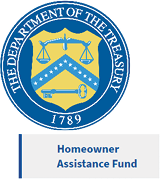HAF Program Helped a Half Million Homeowners Through 2023, Treasury Reports

The Homeowner Assistance Fund (HAF) assisted more than 500,000 homeowners through 2023, the U.S. Department of the Treasury announced earlier this week. Treasury’s announcement coincided with the release of HAF program data through the fourth quarter of 2023. The agency also published a blog post highlighting how state and tribal HAF programs have applied lessons from the Hardest Hit Fund program (HHF) when implementing HAF.
In total, state, territorial, and tribal HAF programs provided more than $6.6 billion in assistance to help 501,523 homeowners remain in their homes. This represents a nine percent increase in homeowners assisted over the third quarter of 2023. Including administrative expenses, HAF programs have expended more than $7.4 billion in programs funds, 77 percent of their total allocation.
Ninety percent of HAF recipients earned at or below area median income (AMI) and 53 percent qualified as socially disadvantaged individuals. Treasury’s press release credits HAF agencies with assisting vulnerable and underserved households, noting 54 percent of approved HAF applications were for very low-income homeowners. The release also cites efforts by the South Carolina State Housing Finance and Development Authority, Indiana Housing and Community Development Authority, and New Hampshire Housing to make it easier for homeowners to access their HAF programs.
Treasury’s blog post credits HAF’s success partially to lessons learned from HHF. Treasury established HHF in 2010 through the Troubled Asset Relief Program in response to the 2008 financial crisis. The fund allocated $9.6 billion to 18 states and the District of Columbia to assist struggling homeowners during unprecedented home price declines and sustained high unemployment. The three main lessons from HHF Treasury believes most impacted the design and implementation of HAF programs are ensuring the programs target homeowners most at risk of losing their homes; a streamlined and intuitive application process for homeowners; and encouraging coordination with mortgage servicers, HAF agencies, and other stakeholders. The blog cites nearly a dozen examples of how state and tribal HAF administrators designed their programs to meet these goals and fit the needs of their communities.
Treasury’s blog post also credits HAF’s success to program flexibility. Treasury has allowed states to make changes quickly to the designs of their HAF programs to reflect the changing needs of their jurisdictions. Treasury specifically mentions New Hampshire Housing and North Carolina Housing Finance Agency as two administrators that made key changes to their program requirements to allow them to more quickly assist homeowners.
In its blog, Treasury notes more than $800 million in HAF assistance has gone to help homeowners with non-mortgage assistance, including $363 million in property taxes, $208 million in utility payments, and $43 million in home repairs.
State HFAs administer the HAF program in nearly three-quarters of states and territories. Since HAF was authorized by the American Rescue Plan Act in 2021, NCSHA has worked with HAF administrators, Treasury, mortgage servicers, housing counselors, and other interested parties to facilitate HAF’s launch and implementation. NCSHA also has worked to foster collaboration and communication among all state and territorial HAF programs, including those run by non-HFAs.
More information is available on NCSHA’s HAF webpage.

